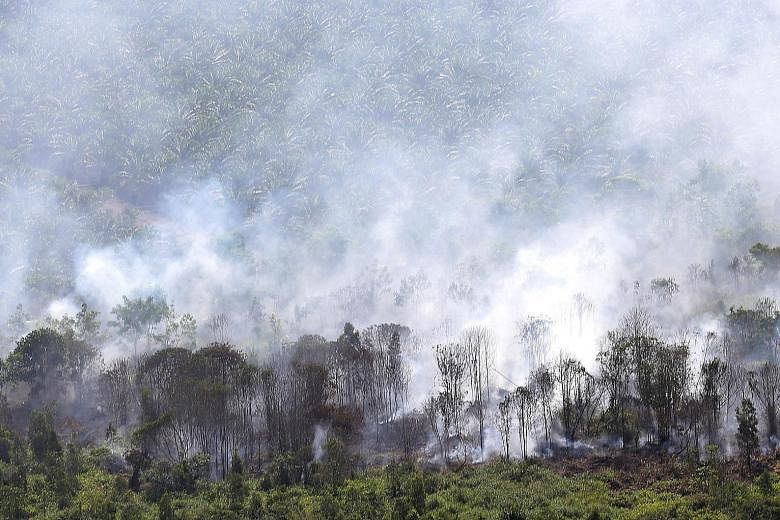Asean countries yesterday agreed on the contents of a road map to use in a bid to control the annual haze problem, but stopped short of pointing fingers at Indonesia over the issue of forest fires.
The adoption of the road map is expected to assist Asean in achieving a haze-free region by 2020, just four years away.
"We work together to overcome any problem but we can't bulldoze through... We must respect others' sovereignty," Malaysian Environment Minister Wan Junaidi Tuanku Jaafar said at a joint press conference with his Asean counterparts at the end of the 12th conference of the parties to the Asean Agreement on Transboundary Haze Pollution (AATHP).
The AATHP was established in 2002 as a key step towards managing the region's choking haze, which has become a yearly problem since 1997. The agreement was ratified by all member states in January last year.
Officials yesterday declined to give details of the road map.
Malaysian Deputy Prime Minister Ahmad Zahid Hamidi, who attended the meeting, urged Asean to revive "high priority" cooperation to tackle the haze, adding that the lack of resources has left some efforts dormant.
"Let us not only reflect on the issues, but also focus on solutions and encourage one another in achieving our national plans and targets to eliminate the transboundary haze problem," he said.
The annual health hazard, which typically starts in mid-August, has begun in West Kalimantan with dozens of hot spots detected this week.
Singapore's Environment and Water Resources Minister Masagos Zulkifli told the Singapore media that all must do their part to achieve the 2020 target.
"If everyone does what they set out to do, have political will, enforcement of national laws, then this would be achieved. This includes consumers playing their part," he said.
"We can't be complaining about the haze, and then buying the products that are produced in concession areas that caused the haze."
In a Facebook post yesterday, Mr Masagos highlighted the Asean Haze Monitoring System as an important initiative.
The system involves using digitised maps and sharing information on concession land in forest fire- prone areas. It was adopted by Asean in 2013 but has yet to be implemented.
Indonesian Environment and Forestry Minister Siti Nurbaya Bakar did not attend this year's meeting.
Her representative, Mr Arief Yuwono, a senior adviser to the ministry, said the country has worked to address the yearly fires.
"We have also suffered, that's why we have initiatives at the policy and local government level," he told reporters.
Asked about Indonesia's action against culpable companies, Mr Arief said there have been "penalties and sanctions more stringent than before", but did not elaborate.
Meanwhile, ministry spokesman Novrizal Tahar told The Straits Times that "the efforts made by various parties have resulted in a very sharp decline in hot spots in 2016, of 65 per cent to 70 per cent, compared to 2015".
•Additional reporting by Arlina Arshad

